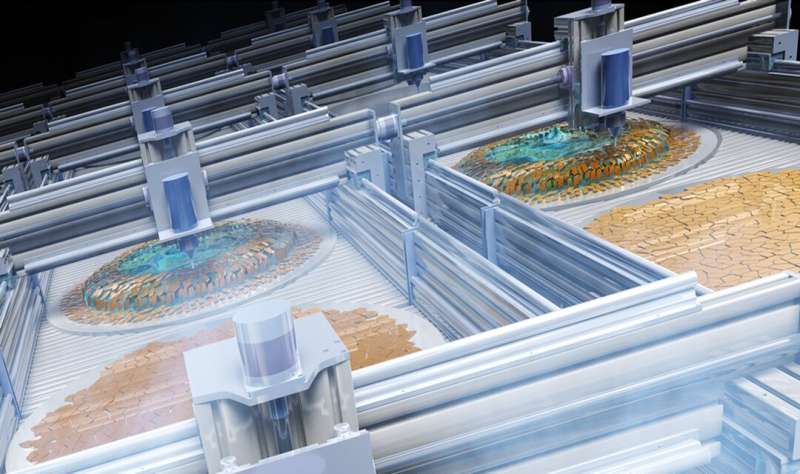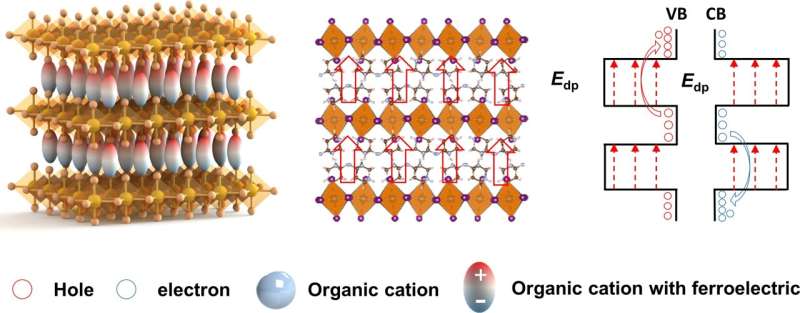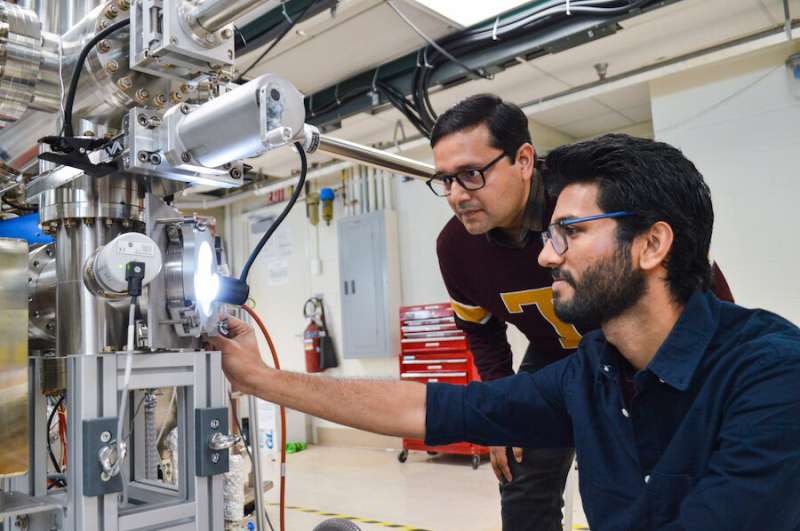Architects collaborate with nature for fungus-based building material (06/06/2023)
The UK’s PLP Architects is focused on creating a greener future by collaborating with nature, developing a fungus-based modular block that is renewable and biodegradable, and has the potential to become a new building material with minimal environmental impact.
New treatment makes steel alloys both stronger and more flexible (05/06/2023)
Strength and flexibility are
two opposites that usually need to be balanced in steel. But now engineers at
Purdue University and Sandia National Labs have developed a new treatment that
can be applied to steel alloys to make them both stronger and more ductile at
the same time, which could have a range of uses in energy and aerospace.

Researchers improving technology to generate high harmonics in nonlinear nanostructured metasurfaces (23/05/2023)
Natural and artificial crystals
can change the spectral color of light, which is known as the nonlinear optical
effect. Color conversion is used for numerous applications, including nonlinear
microscopy for biological structures and material examinations, LED light
sources and lasers in optical communications, and in photonics and its
resulting technologies such as quantum computing. Researchers from Paderborn
University have now found a way to improve the physical process underlying the
phenomenon. The results have been published in the journal Light: Science
& Applications.

Researchers report technique to fabricate nanosheets in one minute (23/05/2023)
A research group led by Professor
Minoru Osada (he, him) and postdoctoral researcher Yue Shi (she, her) at the
Institute for Future Materials and Systems (IMaSS), Nagoya University in Japan,
has developed a new technology to fabricate nanosheets, thin films of two-dimensional
materials a couple of nanometers thick, in about one minute.

Molecular ferroelectrics drive two-dimensional thin film solar cells (23/05/2023)
Two-dimensional (2D) perovskite
thin films possess diverse tunability, excellent optoelectronic properties and
superior long-term stability, which are of great significance for high
performance of perovskite solar cells. This study was led by Professor Guifu
Zou from College of Energy, Soochow Institute for Energy and Materials
Innovations, Soochow University.

Stretching metals at the atomic level allows researchers to create important materials for quantum applications (23/05/2023)
A University of Minnesota Twin
Cities-led team has developed a first-of-its-kind, breakthrough method that
makes it easier to create high-quality metal oxide thin films out of
"stubborn" metals that have historically been difficult to synthesize
in an atomically precise manner. This research paves the way for scientists to
develop better materials for various next-generation applications including
quantum computing, microelectronics, sensors, and energy catalysis.

Wiring up quantum circuits with light (23/05/2023)
Quantum computers promise to
solve challenging tasks in material science and cryptography that will remain
out of reach even for the most powerful conventional supercomputers in the
future. Yet, this will likely require millions of high-quality qubits due to
the required error correction.
Edible CBD coating keeps fruit fresher for longer (21/05/2023)
It may be delicious and healthy, but fruit is frustratingly fickle too, often going bad quickly in the fridge. Now, researchers in Thailand have developed an invisible, edible coating made with cannabidiol (CBD) that can preserve fruit for much longer.

Researchers use structured light on a chip in another photonics breakthrough (20/05/2023)
In everyday life we experience
light in one of its simplest forms—optical rays or beams. However, light can
exist in much more exotic forms. Thus, even beams can be shaped to take the
form of spirals; so-called vortex beams, endowed with unusual properties. Such
beams can make dust particles to spin, just like they indeed move along some
intangible spirals.
Recyclable Powder Can Kill Thousands of Waterborne Bacteria per Second When Exposed to Sunlight (19/05/2023)
At least 2 billion
people worldwide routinely drink water contaminated with
disease-causing microbes.









